#chinese medicine near me
Text
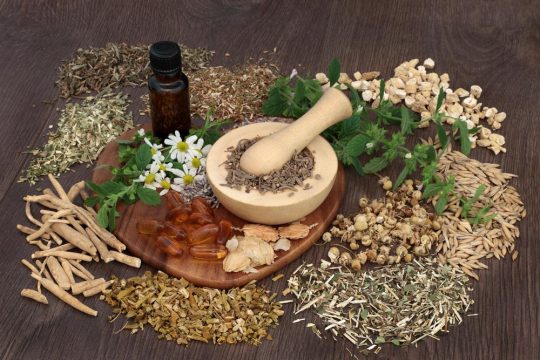
#accupuncture near me#acupuncturist near me#alignment chiropractic#bayside chiro#bioresonance therapy#cairns laser clinic#chinese herbal medicine near me#chinese herbalist cairns#chinese massage cairns#chinese medicine near me#chiropractic clinic#chiropractic works cairns#chiropractor cairns#cupping therapy near me#integrated wellness#integrated wellness clinic#laser acupuncture#laser clinics bayside#laser clinics cairns#laser pain therapy#laser therapy for pain#natural health clinic#natural health medicine#natural therapies#naturopath doctors#naturopathic clinic#naturopathy treatment#osteopathy treatment#traditional chinese medicine near me#wellness chiropractic
0 notes
Text
The Healing Benefits of Chinese Herbal Medicine at Healing Pond
Chinese herbal medicine is a cornerstone of traditional Chinese medicine, offering natural and effective solutions for various health conditions. If you are searching for "Chinese herbal medicine near me" or "herbal medicine near me," Healing Pond is your go-to destination for personalized herbal treatments that promote holistic well-being.
What is Chinese Herbal Medicine?
Chinese herbal medicine involves the use of plant-based substances to treat and prevent illnesses. These herbs are carefully selected and combined based on their unique properties and therapeutic effects. The goal is to restore balance and harmony within the body, promoting natural healing and overall health.
The Philosophy Behind Herbal Medicine
Traditional Chinese medicine views health as a state of balance between the body’s internal energies, known as Yin and Yang. Illness occurs when this balance is disrupted. Chinese herbal medicine aims to restore this balance by addressing the root cause of the problem rather than just the symptoms.
Benefits of Chinese Herbal Medicine
Natural and Holistic Healing
Herbal medicine offers a natural approach to healing, using plant-based remedies that are less likely to cause side effects compared to synthetic drugs. It addresses the whole person, considering physical, emotional, and spiritual aspects of health.
Treats a Wide Range of Conditions
Chinese herbal medicine can treat a variety of health conditions, including digestive disorders, respiratory issues, skin conditions, and hormonal imbalances. It is also effective in managing chronic conditions such as arthritis and diabetes.
Enhances Overall Well-Being
Regular use of herbal medicine can improve overall well-being by boosting the immune system, enhancing energy levels, and promoting mental clarity. It helps maintain health and prevent future illnesses.
Personalized Treatments
One of the key strengths of Chinese herbal medicine is its ability to provide personalized treatments. Practitioners create customized herbal formulas based on an individual’s unique health needs and constitution.
Why Choose Healing Pond for Herbal Medicine?
Expertise and Experience
At Healing Pond, our practitioners have extensive training and experience in Chinese herbal medicine. We are committed to providing the highest standard of care, using our expertise to develop effective herbal treatments for our patients.
Comprehensive Consultations
We take the time to understand your health concerns and goals through comprehensive consultations. This allows us to create personalized herbal formulas that address your specific needs.
High-Quality Herbs
We use only the highest quality herbs sourced from reputable suppliers. Our herbs are carefully selected and tested for purity and potency, ensuring safe and effective treatments.
Holistic Approach
We believe in a holistic approach to health, addressing the root cause of health issues and promoting overall well-being. Our treatments are designed to restore balance and harmony within the body.
How to Get Started
If you are interested in exploring the benefits of Chinese herbal medicine, contact Healing Pond to schedule a consultation. We will assess your health needs and develop a personalized treatment plan to help you achieve your health goals.
Conclusion
Chinese herbal medicine offers a natural and holistic approach to health, addressing a wide range of conditions and enhancing overall well-being. At Healing Pond, we provide expert herbal treatments tailored to your unique needs. If you are searching for "Chinese herbal medicine near me" or "herbal medicine near me," look no further. Contact us today to learn more about our services and schedule your appointment. Let us help you achieve optimal health through the healing power of Chinese herbal medicine.
0 notes
Text
Herbal Chinese Medicine Near Arizona
Herbal Chinese Medicine Near Arizona
Chinese medicine herbs are essential for good health, Chinese natural herbs are commonly used today for their effectiveness for a number of common illnesses – this method goes back at least 2,000 years.
Over that time, a vast amount of experience has been gained that has gone towards perfecting clinical applications. Our herbs can greatly increase the effectiveness of modern drug treatments, reduce their side-effects,
Our herbs consist of thousands of plant species. Herbal Chinese Medicine Near Arizona are most often taken in combinations of herbs rather than on their own. By combining herbs, synergies have been discovered that vastly increase the medicinal effects. Our formulas consist of principal herbs, assisting herbs, directional herbs, and herbs that reduce the side effects, or aid the digestion of a particular herb.
At Eastern Medicine Center, we have the most comprehensive supply of 350+ dried raw herbs from China, America and other countries in the valley.
Visit Our clinic and herbal medicine store online and in. person located in Scottsdale, Arizona.
Herbal Chinese Medicine Near Arizona, a cornerstone of Traditional Chinese Medicine (TCM), has been practiced for thousands of years, leveraging the therapeutic properties of plants and natural substances to promote health and treat illness. This ancient practice is deeply rooted in the philosophy of harmony and balance within the body and between the body and its environment.
Historical Context
The origins of herbal Chinese medicine date back to ancient China, with the earliest records found in texts such as the "Shennong Ben Cao Jing" (Shennong's Classic of Materia Medica), which dates back to around 200 CE. This text lists hundreds of herbs and their medicinal properties, forming the foundation for later developments in TCM. Over the centuries, herbal medicine evolved through empirical practice and scholarly refinement, integrating new herbs and formulations as they were discovered and tested.
Principles and Theory
At the heart Herbal Chinese Medicine Near Arizona is the concept of Qi (vital energy), Yin and Yang (the dual forces that must be balanced for health), and the Five Elements (Wood, Fire, Earth, Metal, and Water) that represent different aspects of physiological functions and their interactions. Disease is seen as a result of imbalances or disruptions in these elements and forces.
Herbs are classified according to their energetic properties, such as temperature (hot, warm, cool, cold), flavor (pungent, sweet, sour, bitter, salty), and their specific effects on various organs and meridians (energy pathways). For example, ginseng (Ren Shen) is considered warm and sweet, beneficial for tonifying Qi and strengthening the spleen and lungs. Conversely, mint (Bo He) is cool and pungent, used to expel wind-heat and soothe the liver.
Common Herbs and Formulations
TCM practitioners typically use herbal formulations rather than single herbs to create a synergistic effect, enhancing therapeutic efficacy while minimizing side effects. One famous example is "Liu Wei Di Huang Wan" (Six Flavor Rehmannia Pill), a classic formula used to nourish Yin and treat deficiencies in the liver and kidneys. This formula combines six herbs, including Rehmannia root, Cornus fruit, and Dioscorea, each contributing to the overall balance and effect.
Modern Applications and Research
In contemporary times, herbal Chinese medicine has gained global recognition, with growing interest in its integrative approach to health. Modern research has focused on understanding the pharmacological properties of these herbs, aiming to validate their traditional uses and explore potential new applications. For instance, studies have demonstrated the immunomodulatory effects of astragalus (Huang Qi) and the anti-inflammatory properties of turmeric (Jiang Huang).
Challenges and Considerations
Despite its benefits, herbal Chinese medicine faces challenges such as quality control, standardization, and safety concerns, particularly regarding herb-drug interactions and contamination with heavy metals or pesticides. It is crucial for practitioners to source high-quality herbs and for patients to consult qualified TCM practitioners to ensure safe and effective treatment.
Conclusion
Herbal Chinese Medicine Near Arizona represents a rich tradition of natural healing, blending ancient wisdom with modern scientific inquiry. By focusing on the body's intrinsic balance and using the natural properties of herbs, it offers a holistic approach to health and well-being that continues to be relevant in today's world. As research progresses, the integration of herbal Chinese medicine into mainstream healthcare holds promise for enhancing our understanding and management of health and disease.
0 notes
Text
Vivian Chow | Oriental Medicine Practitioner | Flow Acupuncture
Vivian Chow: Your Acupuncture Expert at Flow Acupuncture! Meet Vivian Chow, your acupuncture expert at Flow Acupuncture. With a commitment to your well-being, Vivian blends SAAM acupuncture and traditional Chinese medicine for optimal results. Trust in Vivian's dedication to providing expert care and personalised attention on your journey to health.

#Chinese Medicine Jenny#Jenny Kwon#Vivian Chow#Chinese Medicine Vivian#Acupuncture Jenny#Acupuncture Vivian#Herbalist Near me#Acupuncturists Near me#Traditional Chinese Practitioners#Oriental Medicine Practitioner#Oriental Medicine Doctor
0 notes
Text
Examining the Traditional Chinese Medicine Clinic: A Comprehensive Guide to Restoring Health
A Chinese medicine clinic provides a distinctive viewpoint on health and wellness in a time when modern medicine predominates in healthcare procedures. The Acupuncture Clinic is the focal point of this conventional method; it serves as a sanctuary for people looking for age-old methods of healing and rejuvenation.
0 notes
Text
Cancer: the Benefits of Acupuncture and Chinese Medicine
I am often asked if acupuncture and Chinese Medicine are effective for cancer. Mostly, I am in awe at the power of this medicine that has been used, tested, and refined for thousands of years to bring people into a higher state of health. Here’s what I know to be true after 30 years of practice:
The body and mind of a person have their own healing mechanisms that work better than anything else. As a practitioner, the best I can do is guide patients back into balance on the physical, mental, and emotional levels, so that their innate healing processes can do their work.
In Chinese Medicine, we recognize patterns of imbalance such as deficiency, excess, or stagnation. These imbalances interfere with the healing process, and over time, often lead to chronic diseases. Identifying these patterns through pulse, tongue, and abdominal diagnoses enables me to focus on correcting these imbalances with acupuncture, Chinese herbs, and cancer. If this is done early in the disease process, a chronic illness may be avoided.
Once a chronic disease is established, in cancer, for example, how can acupuncture and Chinese Medicine be helpful? The most important things I do is identify the imbalances and work to bring the person back into balance so healing can happen at the highest level. Most of the people I work with who have cancer are also doing Western medical treatments. And these treatments are becoming more targeted and more effective with fewer side effects. But their goal is to destroy the cancer cells and rarely address the whole person. Focusing on the whole person, acupuncture treatments will help neutralize the negative effects of chemotherapy, radiation, or surgery, reduce the pain and fatigue and bring the person back into a state where healing can occur on other levels as well. The person’s energy is improved, sleep is better, and digestion is enhanced. In addition to acupuncture, I will also often recommend herbal formulas that will address such issues as immune deficiency, qi deficiency, stagnation, or excess patterns. This complementary use of Western Medicine with acupuncture and Chinese Medicine has proved to be very effective.
Once the Western treatments are completed, the goal is to restore the patient’s energy and vitality and continue to bring the body back into balance — identifying what may have led to cancer in the first place, and most importantly, strengthen the immune system to prevent a recurrence.
For more information about how acupuncture and Chinese Medicine can benefit a person with cancer, you may call my office in Boulder, Colorado at 303 413-9596 or view my website: https://davidscrimgeour.com/cancer-support/
#acupuncture boulder#acupuncturist#Boulder Acupuncture Cancer#Boulder Acupuncturist Cancer#Boulder Acupuncture clinic#Acupuncture Boulder#Acupuncturist Boulder#Boulder Acupuncture near me#Chinese Medicine#usa#USA
0 notes
Text
Lotus Valley Acupuncture | Acupuncture Clinic | Herbal Shops in San Jose CA
Ours is the most trusted Acupuncture Clinic in San Jose CA. We help our clients achieve optimal health and wellness by using Traditional Chinese Medicine (TCM) principles to treat a variety of physical and emotional conditions. With a focus on personalized care, we offer a range of holistic treatments to address various health concerns, from pain management to stress reduction. Moreover, you can discover the power of nature's remedies with us, one of the leading Herbal Shops in San Jose CA. Our knowledgeable staff provides personalized guidance and recommendations tailored to your unique needs. We utilize ancient Chinese herbs to help you regulate your circadian rhythm. So, if you want to schedule an appointment, call or visit us today.

#Acupuncture Clinic in San Jose CA#Herbal Shops in San Jose CA#Massage and Acupuncture near me#Traditional Chinese Medicine near me#Pain Management near me
1 note
·
View note
Text
What i've been learning thru my research is that Lawn Culture and laws against "weeds" in America are deeply connected to anxieties about "undesirable" people.
I read this essay called "Controlling the Weed Nuisance in Turn-of-the-century American Cities" by Zachary J. S. Falck and it discusses how the late 1800's and early 1900's created ideal habitats for weeds with urban expansion, railroads, the colonization of more territory, and the like.
Around this time, laws requiring the destruction of "weeds" were passed in many American cities. These weedy plants were viewed as "filth" and literally disease-causing—in the 1880's in St. Louis, a newspaper reported that weeds infected school children with typhoid, diphtheria, and scarlet fever.
Weeds were also seen as "conducive to immorality" by promoting the presence of "tramps and idlers." People thought wild growing plants would "shelter" threatening criminals. Weeds were heavily associated with poverty and immortality. Panic about them spiked strongly after malaria and typhoid outbreaks.
To make things even wilder, one of the main weeds the legal turmoil and public anxiety centered upon was actually the sunflower. Milkweed was also a major "undesirable" weed and a major target of laws mandating the destruction of weeds.
The major explosion in weed-control law being put forth and enforced happened around 1905-1910. And I formed a hypothesis—I had this abrupt remembrance of something I studied in a history class in college. I thought to myself, I bet this coincides with a major wave of immigration to the USA.
Bingo. 1907 was the peak of European immigration. We must keep in mind that these people were not "white" in the exact way that is recognized today. From what I remember from my history classes, Eastern European people were very much feared as criminals and potential communists. Wikipedia elaborates that the Immigration Act of 1924 was meant to restrict Jewish, Slavic, and Italian people from entering the country, and that the major wave of immigration among them began in the 1890s. Almost perfectly coinciding with the "weed nuisance" panic. (The Immigration Act of 1917 also banned intellectually disabled people, gay people, anarchists, and people from Asia, except for Chinese people...who were only excluded because they were already banned since 1880.)
From this evidence, I would guess that our aesthetics and views about "weeds" emerged from the convergence of two things:
First, we were obliterating native ecosystems by colonizing them and violently displacing their caretakers, then running roughshod over them with poorly informed agricultural and horticultural techniques, as well as constructing lots of cities and railroads, creating the ideal circumstances for weeds.
Second, lots of immigrants were entering the country, and xenophobia and racism lent itself to fears of "criminals" "tramps" and other "undesirable" people, leading to a desire to forcefully impose order and push out the "Other." I am not inventing a connection—undesirable people and undesirable weeds were frequently compared in these times.
And this was at the very beginnings of the eugenics movement, wherein supposedly "inferior" and poor or racialized people were described in a manner much the same as "weeds," particularly supposedly "breeding" much faster than other people.
There is another connection that the essay doesn't bring up, but that is very clear to me. Weeds are in fact plants of the poor and of immigrants, because they are often medicinal and food plants for people on the margins, hanging out around human habitation like semi-domesticated cats around granaries in the ancient Near East.
My Appalachian ancestors ate pokeweed, Phytolacca americana. The plant is toxic, but poor people in the South would gather the plant's young leaves and boil them three times to get the poison out, then eat them as "poke salad." Pokeweed is a weed that grows readily on roadsides and in vacant lots.
In some parts of the world, it is grown as an ornamental plant for its huge, tropical-looking leaves and magenta stems. But my mom hates the stuff. "Cut that down," she says, "it makes us look like rednecks."
9K notes
·
View notes
Text
Alright...sooo call me crazy but is it just me or Tigress has some connection with flowers a lot? And I mean A LOT!!
First let's start with Tigress's clothing. All her vests & hanfu with floral pattern which throughout the franchise represents her growth

But even before the the whole vine pattern we get to see the same pattern on Tigress's bed when she was still in Bao Gu Orphanage in Secrets of the Furious Five

Next in Secrets of the Scroll when Oogway is talking to Tigress at the Peach tree we see Oogway takes a look at a blossom & tells Tigress "The Question is; Can you be Tigress?" & the same flower flies near her
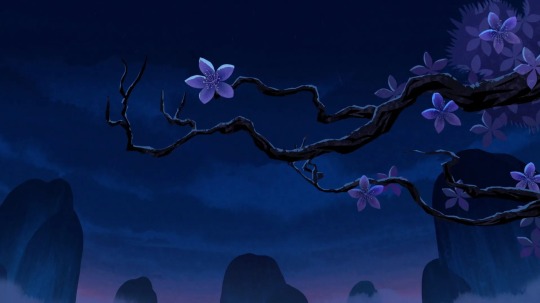
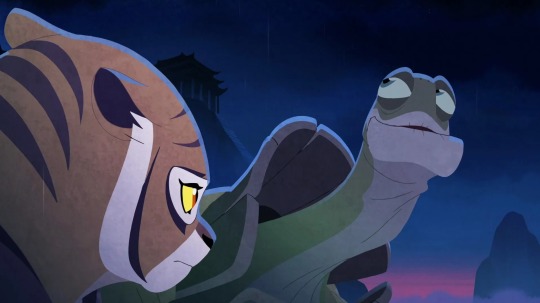
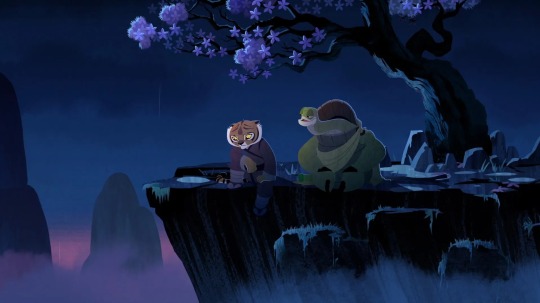

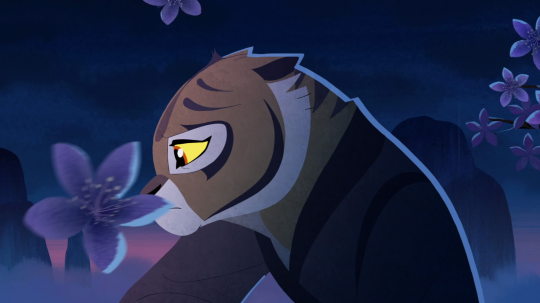
Next; Every time Tigress get's sick there's always a FLOWER involved to cure her. Now I know LoA isn't considered canon but there's one chapter in one of the KFP comics where the story is sorta similar to LoA's Scorpion Sting's episode where Tigress gets river fever. BOTH in the episode & in the comic there's a flower that's her medicine. Also coincidence in both cases Po (WHO'S BIRTH NAME IS ALSO LOTUS) is the one get's the flowers for her

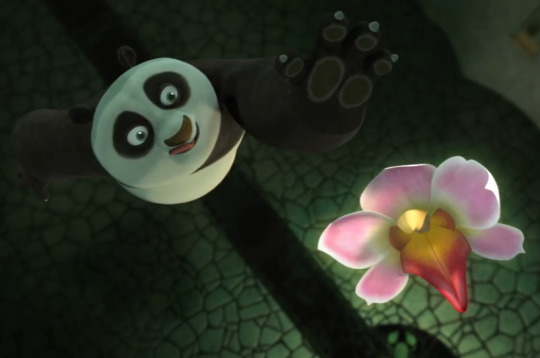


Next in KFP3 while Po is trying to bloom a flower by using the chi technique the camera immediately zooms to injured Tigress with the flower also being in the shot & later Tigress wearing a flower garland & wearing a little flower on her ear just like Lei Lei.

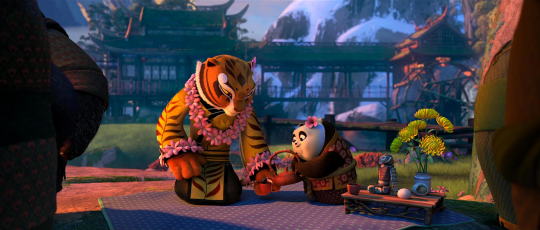
And finally this is by far the most interesting one which got me screaming!
Viper, Po & Lei Lei ALL 3 who are close to Tigress also represents flowers in someway. Mostly in protective or comfort ways.
Viper as flower is her two little flower clips on her head.

Po who's birth name is LITTLE LOTUS!!

And FINALLY Lei Lei. Apparently Lei in Chinese means a bud of a flower!

I MEAN??? THIS CANNOT BE SOME WEIRD COINCIDENCE RIGHT?!?!? THERE HAS TO BE SOME REASON BEHIND IT??
I maybe overthinking but hey...at least I got all out from my chest. But seriously tho i'm sure there's a good explanation behind this flower connection!!

#kung fu panda#kung fu panda 2#kung fu panda 3#kfp#kfp2#kfp3#master tigress#po#dragon warrior#master viper#master shifu#master oogway#kung fu panda secrets of the scroll#kung fu panda secrets of the furious five#lei lei#dreamworks#dreamworks animation#I NEED ANSWERS!!!#I DONT NEED SLEEP!! I NEED ANSWERS
1K notes
·
View notes
Text
#accupuncture near me#acupuncturist near me#alignment chiropractic#bayside chiro#bioresonance therapy#cairns laser clinic#chinese herbal medicine near me#chinese herbalist cairns#chinese massage cairns#chinese medicine near me#chiropractic clinic#chiropractic works cairns#chiropractor cairns#cupping therapy near me#integrated wellness#integrated wellness clinic#laser acupuncture#laser clinics bayside#laser clinics cairns#laser pain therapy#laser therapy for pain#natural health clinic#natural health medicine#natural therapies#naturopath doctors#naturopathic clinic#naturopathy treatment#osteopathy treatment#traditional chinese medicine near me#wellness chiropractic
0 notes
Text
One of my last reblogs got me thinking about this so here is
How all four Zaynes + Sylus would treat you for low iron
Warnings: mentions of hunting, blood, suspicious food and drink. Everything aside from Doctor Zayne's section is not rooted in reality so don't take this as medical advice. If you feel tired all the time, go ask your doctor about it and get a blood test. Trust me, you're not supposed to be tired all the time.
Doctor Zayne
By the book treatments. You'll get iron pills and recommendations for iron-rich foods. If your stomach can't handle the pills, he might recommend iron infusions, all supervised by medical personnel. On his free nights, he'd take you out to dinner or cook for you to make sure you eat iron-rich foods, even if it's only in his presence
Dawnbreaker
He'd repeatedly remind you to rely on him. Just stay in bed, he'll take care of the rest
In his world, everything you need to live is packaged in nutrient drinks or in pills, so he'd gather all these less than tasty nutrient drinks and pills but he'd also go to the outskirts of town, where the wild animals have taken over a part of a forest. They don't entirely live in harmony with the wanderers there. Some say they're no longer animals, but meat is meat, and only fresh meat will do for his beloved, especially when she's sick
He'd come home with freshly butchered meat, and the blood from the meat in large bottles, hoping she'd be able to get some benefit from drinking such a valuable and rare fluid
Foreseer
He wouldn't treat you. You don't belong in the tower. You'll only get sicker here.
"Go back to your people. Only they can help you. I have no means or the experience to cure you here."
But you won't leave. Stubborn, even in the face of an illness that makes you weaker and weaker by the day. But you've experienced this before. It's nothing new
Soon, you and Jas annoy him enough to convince him wild game is actually high in iron and, with his powers, he'd easily be able to hunt one near the tower
It would be his first meal with someone. A warm, hearty meal with the girl he's seen his other selves eat with so many times before
Master of Fate
"Close your eyes and hold my hands. Imagine my energy flowing out of my body, crossing over our hands like a bridge, and being absorbed into your body. Take as much as you need."
The Master of Fate is also a master of ancient energy magic, so something like mana or energy transfer would be easy for him if you're ill or need a boost
This won't fix the cause of your low energy of course, but this would be a start to get you on your feet
Once you have enough energy to travel down the mountain, he'd bring you to a healer, someone who works with and sells all sorts of dried herbs and Chinese medicines
Protest all you want but these bitter, smelly concoctions are going into your mouth one way or another. He'd laugh at your reaction and call you a child for making a fuss about taking your medicine, and he'd promise you a sugary treat if you take it like a good girl
Sylus
"Are you ignoring Zayne's advice again? You're really putting him through his paces, huh? I'd have my own personal doctor take a look at you but I have a feeling you'd listen to him even less. Well, if it's iron you need, then tonight we'll have steak. And we'll have steak for as many nights as you like after that. I'll have the chef work on a meal plan with you."
With your steak dinners, he'd offer you a particular red wine. It tastes a little sharper, a little richer... The way he watches so carefully when you take a drink, and the way he smiles at you when you swallow... You'd be suspicious about it, if it weren't for the fact that you did in fact feel much better after each meal
#Gotta be the most self indulgent posts Ive made so far#And I've made a ton lmao#love and deepspace#zayne love and deepspace#sylus love and deepspace#Scenarios
56 notes
·
View notes
Text
"During the global coronavirus pandemic, China built dozens of makeshift hospitals and state quarantine centers, some out of steel container boxes. They became closely associated with the anxiety of mass testing and the fear of sudden lockdowns.
Now, cities are turning the huge centers into affordable housing units for young workers in an attempt to revive the country's economy post-COVID...
Just over a year ago, these apartments were used very differently: for medical triage and quarantine facilities. Beijing alone built 23 of these makeshift facilities, designed to hold up to 23,000 people at a time.
"It was not very cold yet but they told me to pack my belongings," remembers Hudson Li, a Beijing resident who was quarantined in one of these facilities, called fangcang in Chinese, in October 2022...
Less than two months after Li was quarantined, Beijing lifted most of its COVID restrictions. Li says he still associates the fangcang with a feeling of helplessness and fear: "It has been over a year already, but I definitely have PTSD from the pandemic, from the fear of scarcity and having to stock up on a lot of medicine and food."
Attracting young tenants with low rents
Now the fangcang across the country are undergoing a minor transformation and turned into apartment units for young graduates like Li. The changes are an effort from local authorities, who have been tasked with restarting economic growth and supporting small businesses after nearly three years of ruinous lockdowns.
Populous cities like Beijing are also trying to bridge the housing affordability gap between high real estate prices and low salaries, on average, for young workers. In the northeast corner of the capital city, near its airport, one fangcang with more than 4,900 units has been rebranded the "Jinzhan Colorful Community" — a reference to the bright hues of paint — and now offers amenities like a canteen where residents can grab a cheap meal before or after work.
Another fangcang facility, in the northeastern city of Jinan, has been turned into 650 units for skilled workers inside an industrial park.
"Given that the current overall [COVID] epidemic situation in the country has entered a low level, revitalizing the fangcang for other housing purposes is worth learning and thinking about all over the country," Yan Yuejin, a housing analyst, told Chinese media.
The fangcang, once a symbol of containment, are now supposed to represent dynamism and growth.
"I have complex feelings about this. The facilities were built using public funds and not rented out transparently," Li says. "But I do have to say you will not get anything more affordable than these apartments. They are very price competitive."
A list of rental prices for a Beijing fangcang converted into apartments shows most rooms are Rmb1200 (USD $170) a month, low for Beijing."
-via NPR, December 9, 2023
#china#covid#quarantine#affordable housing#housing#beijing#jinan#apartments#real estate#housing crisis#cost of living#good news#hope
80 notes
·
View notes
Text
0 notes
Text
Traditional Chinese Practitioners | Flow Acupuncture
Traditional Chinese Practitioners: Vivian and Jenny at Your Service! Put your health in the hands of traditional Chinese practitioners at Flow Acupuncture. Vivian and Jenny bring a wealth of experience to provide comprehensive and effective care. Trust in the time-tested wisdom of traditional Chinese medicine as our practitioners guide you towards optimal health.

#Traditional Chinese Practitioners#Oriental Medicine Practitioner#Oriental Medicine Doctor#Acupuncturists Near me#Herbalist Near me#Chinese Medicine Vivian
0 notes
Text
Japanese Monkey God
User @red-lights-burning asked if there was a connection between Sun Wukong and the monkey gods of Japan. They provided lovely info, which was split between two asks, but I decided to put everything together into a single post.
@red-lights-burning asked:
Japan has their own monkey protector named Masaru AKA Sannō Gongen, who was created back in the early 9th century by Tendai Buddhist sect founder Saichō shortly after he returned from China. So it makes me think if Monkey King was already a thing in the 800’s and if he was one of the inspirations for Masaru.
A description from onmarkproductions (a really great site for anyone curious about Japanese Buddhism and Shintō)
MASARU 神猿
Literally “Kami Monkey.” Masaru is the sacred monkey and protector of the Hie Shrine (aka Hie Jinja 日吉神社, Hiyoshi Taisha 日吉大社). The term “Masura” is often translated as “excel,” reflecting the belief that this sacred monkey can overcome all obstacles and prevail against all evil. Masaru is thus considered a demon queller par excellence (魔が去る・何よりも勝る). In the Heian era, Masaru (also translated “Great Monkey”) was invoked in Kōshin rituals to stop the three worms from escaping the body. Masaru also appears in Japanese scrolls used in Koushin rites.
Here’s a couple other descriptions
SANNŌ GONGEN 山王 権現 SARUGAMI 猿神 Fertility, Childbirth & Marriage
Monkeys are patrons of harmonious marriage and safe childbirth at some of the 3,800 Hie Jinja shrines in Japan. These shrines are often dedicated to Sannō Gongen 山王権現 (lit. = mountain king avatar), who is a monkey. Sannō is the central deity of Japan’s Tendai Shinto-Buddhist multiplex on Mt. Hiei (Shiga Prefecture, near Kyoto). The monkey is Sannou’s Shinto messenger (tsukai 使い) and Buddhist avatar (gongen 権現).
The monkey messenger is also known as Sarugami (猿神; literally “monkey kami”). Sarugami is the Shinto deity to whom the three monkeys (hear, speak, see no evil) are reportedly faithful. The monkey shrine at Nakayama Shrine 中山神社 in Tsuyama City, Okayama Prefecture, is dedicated to a red monkey named Sarugami, who blesses couples with children. According to shrine legends, the local people at one time offered human sacrifices (using females) to this deity. The shrine is mentioned in the Konjaku Monogatari-shu (今昔物語集), a collection of over 1000 tales from India, China, and Japan written during the late Heian Period (794-1192 AD). Sarugami, like Sannou Gongen, is also worshipped as the deity of easy delivery and child rearing. At such shrines, statues of the monkey deity are often decked in red bibs -- a color closely associated with fertility, children, and protection against evil forces and diseases like smallpox.
My answer:
I've read only a little bit about Japanese monkey gods. I previously referenced Sarugami in my article about the possible shamanic origins of primate-based boxing in China. Part of footnote #14 reads:
In Japan, monkeys were also associated with horses and healing via the warding of evil. Apart from monkeys being kept in stables like their Chinese counterparts, their fur was applied to the harnesses and quivers of Samurai because the warriors believed it gave them more control over their mounts. Furthermore, monkey body parts have been consumed for centuries as curative medicines, and their hides have even been stuffed to make protective amulets (kukurizaru) to ward off illness. Likewise, a genre of painting depicts divine monkeys (saru gami), messengers of the mountain deity, performing Da Nuo-like dances to ensure a good rice harvest (Ohnuki-Tierney, 1987, pp. 43-50)
The aforementioned article suggests a connection between monkeys and the Shang-Zhou Da Nuo (大儺 / 難; Jp: Tsuina, 追儺) ritual, an ancient, war-like, shamanic animal dance designed to drive away demonic illness and influences. The pertinent section reads:
It’s possible that the “twelve animals” of the Da Nuo exorcism refer to some precursor of the Chinese zodiacal animals (rat, ox, tiger, rabbit, dragon, snake, horse, goat, monkey, rooster, dog, and pig). If true, monkey fur could have been among the animal products worn by the ritual army. After all, monkeys have long been associated with curing illness and expelling evil in East Asia. [14] A modern example of exorcists who don monkey fur are the shamans of the Qiang ethnic group of Sichuan. The Qiang worship monkeys as the source and savior of their sacred knowledge, as well as the progenitor of their people, the latter being a myth cycle common among ethnic groups of Tibet and southwestern China.
This is the only relevant info that comes to mind. But based on what I know, I would guess that Sun Wukong and the monkey gods of Japan draw upon the same cultural sources. I hope this helps.
Source:
Ohnuki-Tierney, E. (1987). The Monkey as Mirror: Symbolic Transformations in Japanese History and Ritual. Princeton: Princeton University Press.
#asks#Sun Wukong#Monkey King#Journey to the West#JTTW#Japanese Buddhism#Shinto#Buddhism#monkey god#shamanism#Lego Monkie Kid#LMK
75 notes
·
View notes
Text

Seeking holistic healing in Boulder? Experience the power of Acupuncture with David Scrimgeour, a renowned Acupuncturist in Boulder. Unlock your body’s natural energy flow and find relief from pain and imbalances. Discover a personalized approach to wellness and embrace the harmony of mind, body, and spirit. Book your session now!
#acupuncturist#chinese herbs#pure herbs#herbs#Acupuncture Boulder#Chinese Medicine#Boulder Acupuncture near me#Acupuncture for pain#Boulder Acupuncture for back pain#Boulder Acupuncture for sciatica#Boulder Acupuncture for fertility#Boulder Acupuncturist pain#Boulder Acupuncturist back pain#Boulder Acupuncture Cancer#Acupuncture and Functional Medicine#USA
0 notes